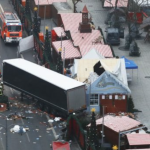After the May riots in Gorno-Badakhshan, many inhabitants try to flee to European countries. The sudden crackdown on peaceful protesters. The leader of the protest, Alovatšiev, was sentenced to 18 years in prison. According to unofficial figures, at least 200 protesters have already been sent to concentration camps.
Moscow () – After the riots and, subsequently, the repression last May in Gorno Badakhshan, the autonomous region of Tajikistan that corresponds to the north of the Pamirs, many locals try by all means to reach European countries. This is what a report reveals. Radio Ozody, who interviewed some emigrants. They asked to remain anonymous, fearing reprisals against their families.
Nuriddin is 30 years old, and comes from Jorog, the capital of the region. He has already been living in Hamburg for three months. He participated in the first protest rally in November last year, and had to flee to Russia, before moving to Europe. According to him, “none of us expected that the persecution against peaceful protesters would start, but the situation drastically worsened in a short time, after Amriddin Alovatšiev was kidnapped in Russia and taken to Tajikistan.” He is referring to the leader of the Badakšan youth movement: Alovatšiev, 44, was hastily sentenced at the end of April, and will serve 18 years in prison on charges of extremism and separatism.
Now Nuriddin is still on hold, as he lacks documents proving his status as a political refugee in Germany; relatives in his country do not provide information to the authorities, to avoid problems. Pressure from state agencies continues to be intense and widespread, and despite promises of amnesty, the number of people detained and sentenced for sedition and terrorism is growing. According to unofficial data, there are already more than 200 protesters sent to concentration camps. And among them are several activists like Alovatšiev, who were forcibly repatriated from Russia and other countries.
A large community of Tajiks of the Pamiri ethnic group lives in Russia. Members of the diaspora also supported the protests from Moscow. They gathered in front of the Tajikistan embassy and with a video, they appealed to the Dushanbe authorities, who have been looking for them ever since to kidnap and imprison them. “We demonstrate openly and within the framework of the law,” says Safar, another activist. “However, they began to systematically suppress us, and we continue to receive anonymous calls, messages and invitations to strange meetings, or simply a series of threats.”
Russian policemen sometimes show up at the homes of Pamiris living in Russia, flanked by Tajiks in plain clothes. They are especially looking for those who collect donations for the families of those killed and injured in the Jorog demonstrations. Another interviewee, whose fictitious name is Orzu, fled to Germany after receiving one of these visits and currently lives in a refugee camp in Bavaria. When he was still living in Moscow, police cars began to circulate around his flat. He went after uploading a post to Instagram, in which he gave information about the repressions in Gorno Badakhshan and invited people to participate in the protest actions. Along with him in the Bavarian camp are another 20 Pamiris, who came with similar stories.
It is estimated that there are hundreds of Pamiri refugees from Badakhshan in Germany. They are joined by many Tajiks, who fled to Europe after 2015 (there are more than three thousand), when the Islamic Revival Party was banned, after being declared a terrorist organization. According to estimates, in the last five years, about 20,000 Tajiks have fled to Europe. Several humanitarian organizations warn of the need to pay more attention to refugees from Central Asia, where persecution for political, social and religious reasons is increasing in many countries.












Add Comment